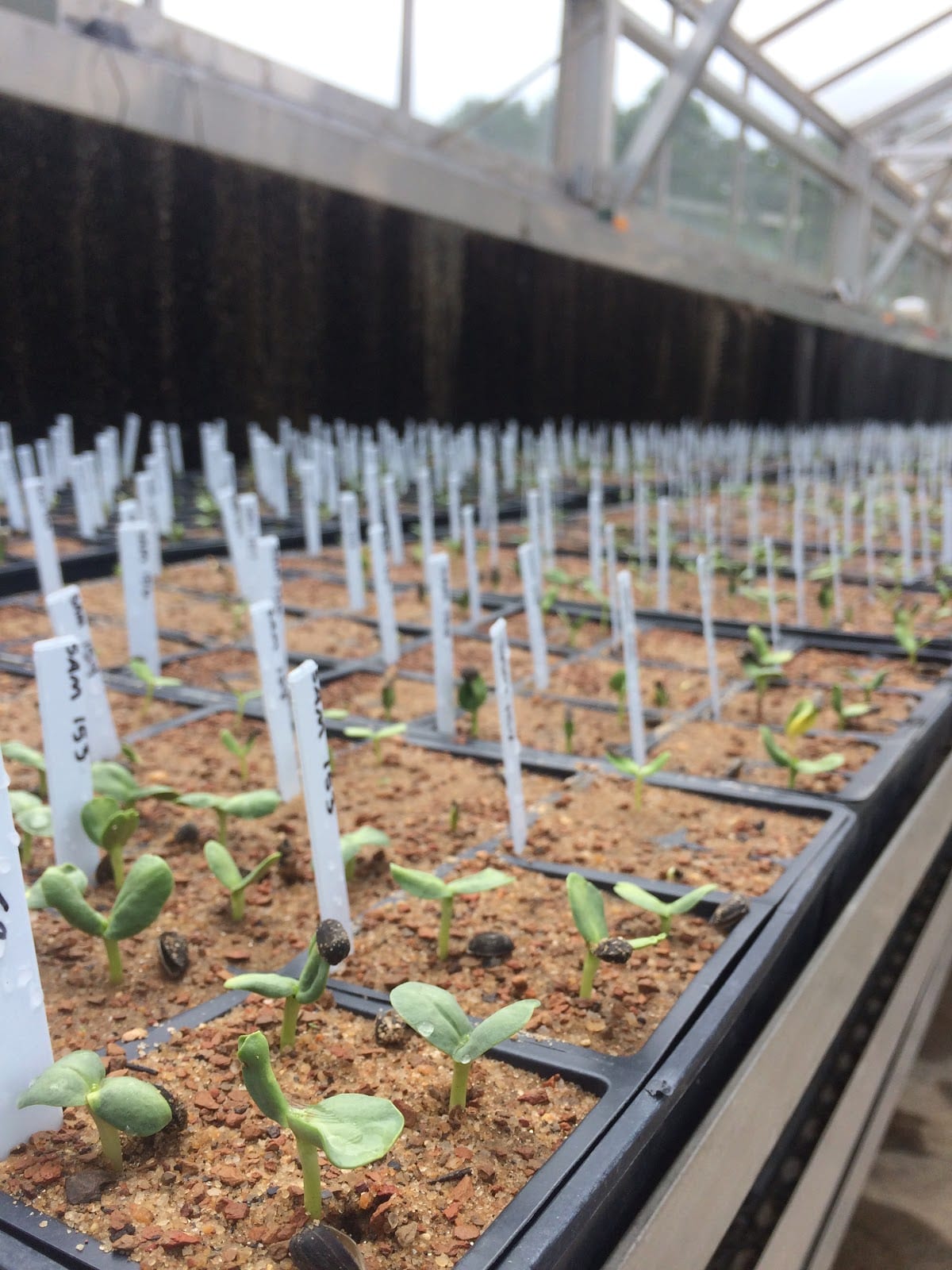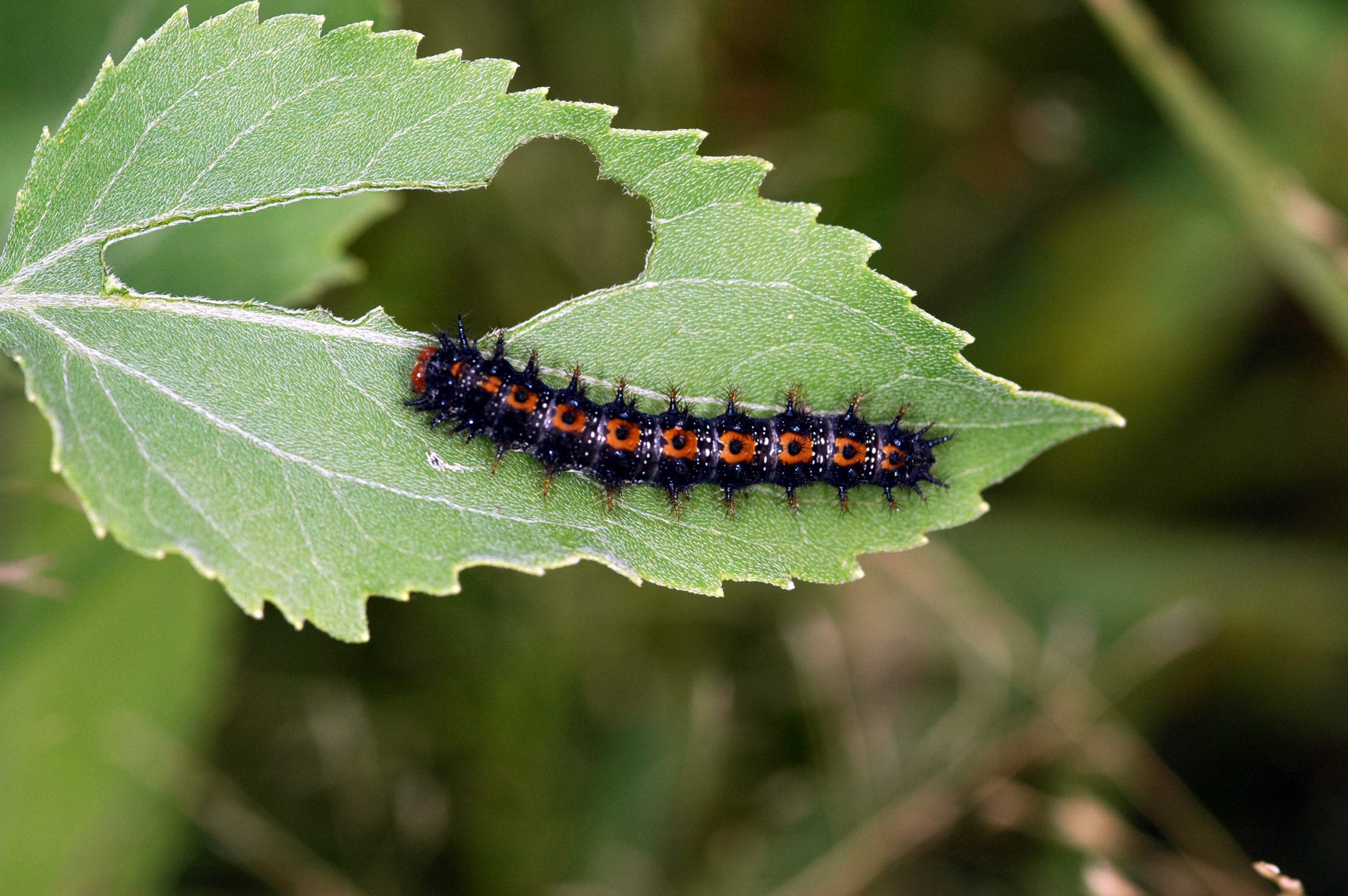“It's going to be a bad year for bugs.†Last month, I was frequently reminded of this expression as a seemingly endless supply of caterpillars feasted happily on the sunflowers from our most recent study. We were in a month-long, losing battle against these numerous and voracious critters!
For the past year and a half, I have been working as a research assistant here at the University of Georgia and work exclusively with sunflowers. During this time, I have certainly seen my fair share of sunflower pests, but everyone in the research group unanimously agreed that the caterpillars seemed particularly problematic this year.

So as a plant scientist, and one particularly interested in the effects of climate on plant ecosystems, this caterpillar problem really got me thinking about the significance of what a “bad bug year†means for insect herbivores and plant populations. Some looming questions I had were: What are the processes that result in a certain year becoming a bad year for bugs? And, more importantly, what are the ecological consequences that may occur from a bad bug year?
Doing a quick Google search of “bad year for bugs†gives a large return of news stories and articles. The majority claim that following a mild winter, bug populations will be larger and more active (more annoying!) in the spring and summer. There is even an official report, the National Pest Management Association's Bug Barometer, that predicts upcoming pest activity throughout the United States based on historic and current weather patterns. Obviously, it appears weather and climate may be important factors in determining when we can expect bad bug years.

Many insects take a year or two to complete their life-cycle, which means they must survive the winter season, a process known as overwintering. Yet, similar to most living creatures, insects are pretty sensitive to the cold, and freezing can be lethal for them! While some insect species migrate to warmer areas during the winter (i.e. the Monarch butterfly), others enter diapuse, a state of dormancy or hibernation, in response to a drop in temperature (i.e. the Mountain pine beetle). Thanks to these adaptations, many insects endure the cold and continue on with their life-cycle once temperatures rise again in the spring.
But even the most cold-adapted insect will not be able to survive temperatures that drop significantly below its tolerance threshold. For instance, the Mountain pine beetle can withstand some pretty cold temperatures, but only when the weather gets really frosty (-30C to -40C for prolonged periods of time), does widespread mortality occur within these beetle populations. So a milder winter means the temperature might not get cold enough to kill overwintering insects, resulting in a larger insect population the following spring and summer. In addition, milder winters extend the insect breeding season, which also results in more bugs throughout the spring and summer seasons.
According to the National Weather Service, this past winter was one of the warmest winters on record for many cities in Georgia, including Athens. So this may have been a determining factor behind the numerous caterpillars we faced in the greenhouse this spring. These caterpillars were a nuisance to us, but I imagine every person that grows food for their livelihood (i.e. home gardeners, farmers, crop breeders, etc) finds herbivorous insect pests intolerable! Caterpillars, along with a plethora of other insect pests, attack crop fields around the world annually, reducing crop yield by about 20% (an economic loss of $470 billion annually!).
Other plant ecosystems are also vulnerable to larger insect populations. For example, in recent years there have been large outbreaks of Mountain pine beetle populations across the North America due to warming winter temperatures. These native beetle species live underneath the bark of the trees, burrowing tunnels to feed and breed. As the number of these tunnels increases, the transportation of water, nutrients and sugars in the tree becomes impaired. Severely affected trees suffer from starvation and drought stress, and may ultimately die leaving behind a large amount of potential fuel for forest fires.
Therefore, a bad bug year after a mild winter could have severe ecological consequences on both global agriculture and forest ecosystems. While there are other important environmental factors that influence bug populations, it seems that a cold winter is a crucial component in helping keep insect populations in check.
 Kelly Kerr is a research assistant in the Plant Biology department at UGA investigating stress physiology in sunflowers. Her research interests include forest ecophysiology, and she is passionate about maintaining resilient forest ecosystems under climate change. She enjoys nearly all forms of outdoor recreation, so you'll probably find her around town trail running, mountain biking or at the climbing gym. Get in touch with Kelly at klkerr86@gmail.com. More from Kelly Kerr.
Kelly Kerr is a research assistant in the Plant Biology department at UGA investigating stress physiology in sunflowers. Her research interests include forest ecophysiology, and she is passionate about maintaining resilient forest ecosystems under climate change. She enjoys nearly all forms of outdoor recreation, so you'll probably find her around town trail running, mountain biking or at the climbing gym. Get in touch with Kelly at klkerr86@gmail.com. More from Kelly Kerr.
About the Author
- athenssciencecafehttps://athensscienceobserver.com/author/athenssciencecafe/April 17, 2020
- athenssciencecafehttps://athensscienceobserver.com/author/athenssciencecafe/April 12, 2020
- athenssciencecafehttps://athensscienceobserver.com/author/athenssciencecafe/April 3, 2020
- athenssciencecafehttps://athensscienceobserver.com/author/athenssciencecafe/March 30, 2020







